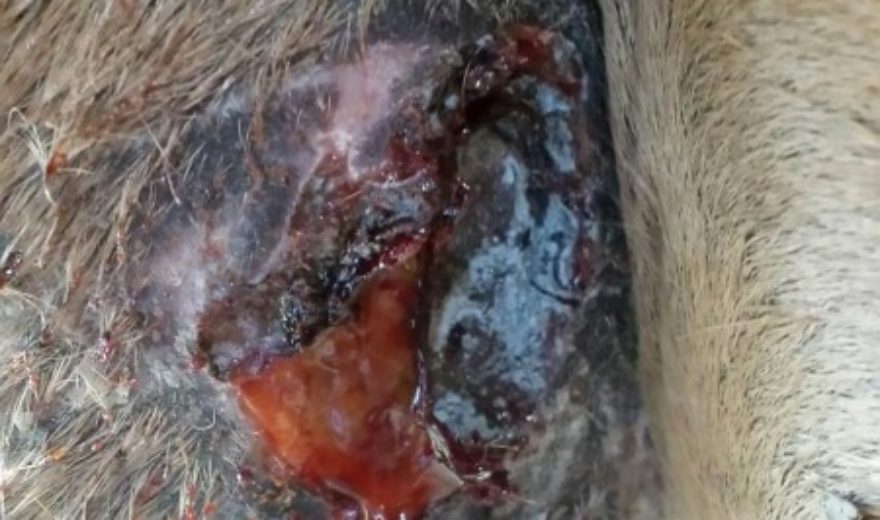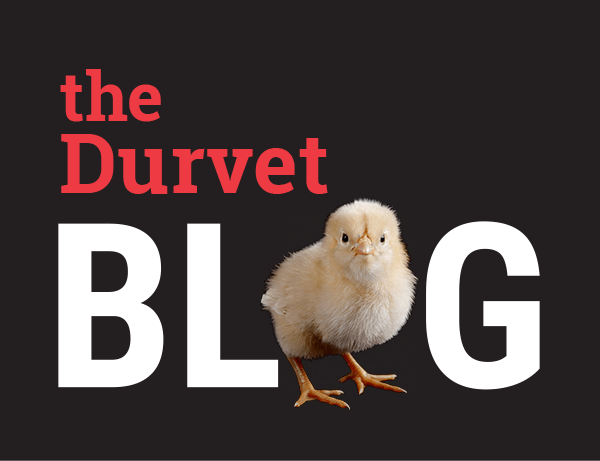
From small skin tears to large open-flesh wounds, wound management is essential to the healing process.
Keeping the wound clean is the number one thing that promotes healing. If the wound isn’t kept clean, it has the chance to become infected.
As always, please contact your veterinarian before trying to treat an open wound on your own.
At the first sign of an injury and open skin, I take my clippers and shave a patch of hair approximately 1”–2” all the way around the wound.
Next, rinse the site with cold, sterile water for approximately ten minutes. This will help reduce inflammation, clean out any debris that may have gotten into the opening and aid in visualization of the opening.
Depending on the veterinarian’s recommendations, lightly scrub the wound with Chlorhexidine scrub or solution. Chlorhexidine helps clean the borders of the wound without damaging the healthy tissue.
Make sure you rinse the area after using Chlorhexidine to keep it from irritating the skin. Finally, apply any dressing the veterinarian suggests to keep the wound covered and to keep the dirt out.
Keep in mind, there are some places on an animal (horses especially) that you can't suture, staple, wrap or bandage without them tearing the area open with movement.
Most of these wounds will heal appropriately if you make sure to keep the site clean and free of dirt/debris as the skin will heal to the skin. This is called “Healing by Second Intention”.
Make sure you keep in contact with your veterinarian to keep infections at bay. At any sign of colored discharge, heat or abnormal swelling, you will want a veterinarian to come out to diagnose an infection and recommend antibiotics.
***Below are pictures of a friend’s horse who was out on a trail-ride. She went to jump a creek and when she squatted on her back legs, she was impaled with a branch that was sticking out of the ground. We got off the horse and immediately went back to camp, where we hosed the wound off with a water hose for 15 minutes to control the bleeding and reduce inflammation. Once the bleeding was stopped, I used a mixture of Furazone and Dust-On to pack into the wound. (This is one of the areas that can't be wrapped, sutured or stapled without reopening the wound with movement). The area was cleaned with sterile water and Chlorhexidine solution once daily and repacked with the mixture of Furazone and Dust-On. Within 2 months the wound healed by second intention with no visible scar. The horse was not ridden during these two months, but has had no problems since the incident.***
[gallery size="medium" ids="27811,27812,27803,27804,27805,27806,27807,27808,27809"]
Post written by Mea Allen, RVT and Durvet Customer Service Representative

 BACK TO MAIN BLOG
BACK TO MAIN BLOG 
Comment